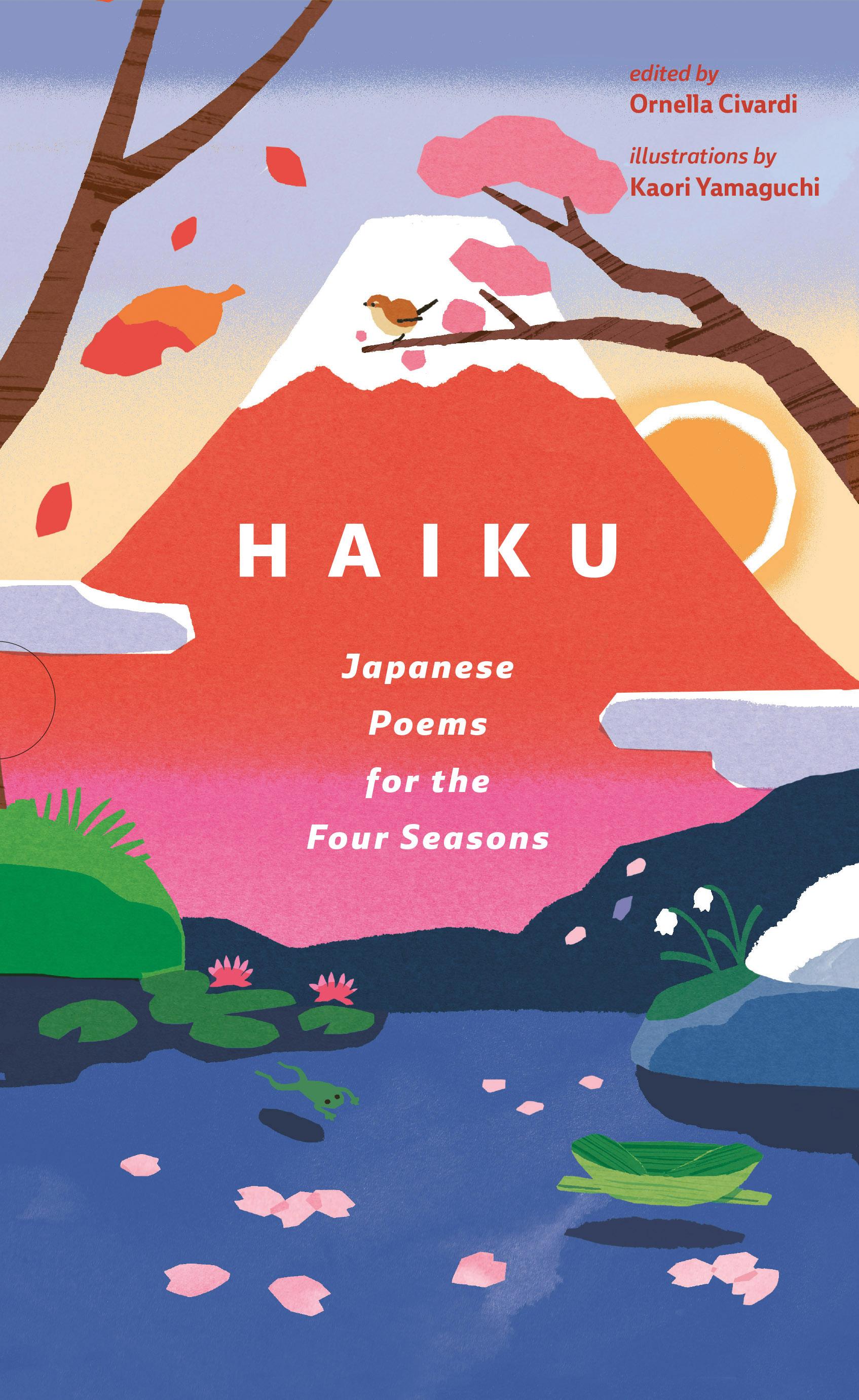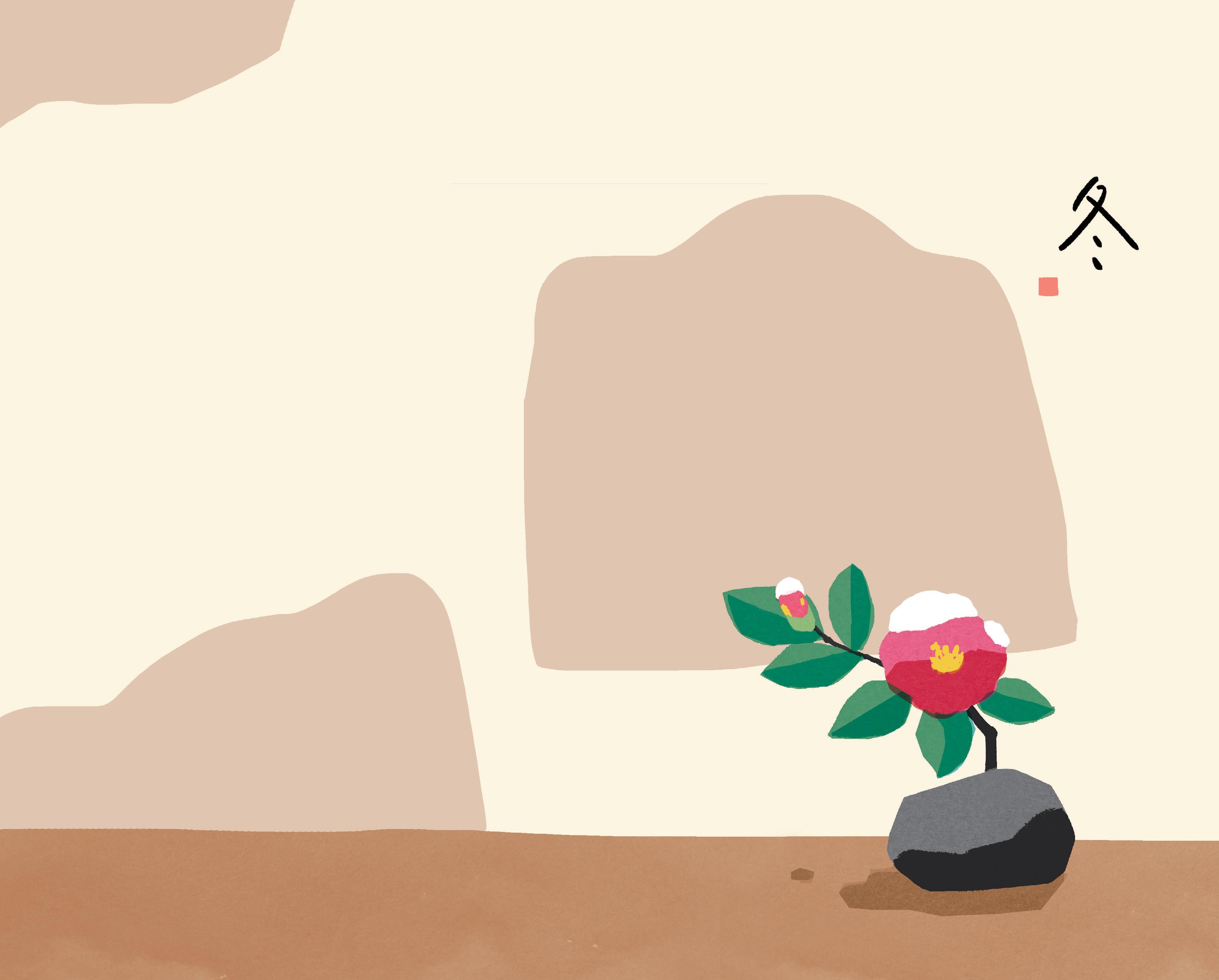summer
In the humid and suffocating heat of the Japanese summer, dominated by the deafening noise of the cicadas, semi, the poet’s imagination seeks out scenes that convey sensations of coolness. The waters of rivers and streams, kasui; the rising of a refreshing breeze, kunpū; the light kimono, yukata; the call of the cuckoo, hototogisu, which evokes the mountains and forests; the luxuriant green foliage of the gardens, aoba; the fan, uchiwa—these appear throughout the verses like first-aid remedies against the heat.
Flies, ants, and mosquitoes (hae, ari, and ka, respectively) provoke outbursts of annoyance and exasperated hunts. Aside from these many bothersome insects, however, there is the firefly, hotaru, punctuating the night with its languid pulses and ecstatic bursts and competing with the stars, the glorious protagonists of the Tanabata festival. Summer is the season of matsuri, the ancient festivals, and if folk dances and fireworks, hanabi, lead to late nights, the blessed nap, hirune, is by no means absent from the haiku of summer.
i take off my bikini clad in the last sun my bare breasts
(Fusae Fubasami)
mizugi nugu ya yūkage matou mizu chibusa
a flash of gold in the shadow of the leaves the eyes of a black cat
(Kawabata Bōsha)
ryokuin ni kuroneko no me no katto kin
autumn
Autumn is a time of quiet and melancholy. After the riotous glory of summer, nature settles down under the first breezes, preparing for its winter sleep. The atmosphere of autumn is that of twilight, kure; its color, red, is strewn across the mountainsides by the leaves of the maples, momiji; its soundtrack, the sound of the crickets, kōrogi, is intense and poignant like the last shudder of life before an impending death.
Tradition holds that the full moon of autumn, mangetsu, is the most beautiful of the year. Under its clear light, contemplation melds with a pensive feeling that eludes speech: the silence eats away at conversation, making way for a new intimacy of hearts, just as it seeps between the verses, amplifying their suggestiveness.
The last chrysanthemum (kiku), the floating plumes of the silvergrass (susuki), the slender inflorescences of the Japanese clover (hagi) become so many images of a fading beauty that already prompts nostalgia, a beauty sparkling and evanescent as the dew, tsuyu, that evaporates in the first rays of the sun.
distant mountains reflected in the eyes of the dragonfly
(Ozaki Hōsai)
tōyama ga
medama ni utsuru
tonbo kana
winter
Among the phenomena of winter weather— kogarashi, the cold wind; kōri, the ice; shimo, the frost; arare, the hail—the favorite is the snow, yuki, which creates a white and silent world where boundaries and differences are erased, suggesting the image of the Zen void. But the snow also evokes nostalgia for childhood games, such as the snow rabbit, yuki no usagi, a popular pastime among Japanese children.
Winter activities are naturally centered on the rituals and traditions that accompany the end of the old year (yukutoshi) and the beginning of the new (Shōgatsu): the colored kites (tako); the First Dream (hatsuyume), to which a divinatory power is assigned; the First Purifying Bath (wakamizu); the First Visit to the Temple (hatsumōde); and so on.
All of this activity is witnessed by a silent nature: yamanemuru, the “sleeping” mountains, and kareno, the expanse of fields burned by the frost and battered by the north wind, make up a desolate landscape in which the only spots of color are provided by a few daffodils, suisen, or nandina berries, nanten no mi.
the crow springs away with a laugh from the snowball
(Kobayashi Issa)
tobinoite karasu warau ya yukitsubute
Ornella Civardi
After receiving a degree in Asian languages and literature from Ca’ Foscari University of Venice in 1987 with a thesis on Japanese literature, Civardi won an annual scholarship from Keio University in Tokyo for 1987–88. She has translated into Italian the work of celebrated Japanese writers and poets of various eras, such as Yukio Mishima, Yasunari Kawabata, Junzaburō Nishiwaki, Yōko Ogawa, Ōgai Mori, and Ikkyū Sōjun. For her Italian edition of Yasunari Kawabata’s Palm-of-the-Hand Stories, she won the Alcantara Prize for translation in 2005. Civardi has also written articles and edited books on Zen and on Japanese culture, literature, and art history.
Kaori Yamaguchi
A Japanese illustrator living in Germany, Yamaguchi enjoys combining colors, drawing with wit and irony, and trying different foods. She specializes in illustrating children’s books and board games, and also creates textile patterns and advertising art.
Translated from the Italian by Henry Fried
This book was first published in the English language in 2025 by Abbeville Press, 655 Third Avenue, New York, NY 10017. It was translated from the Italian edition published in 2023 by Nuinui SA, Chemin du Tsan du Pèri 10, 3971 Chermignon, Switzerland, under the title Haiku: Poesie giapponesi delle quattro stagioni.
Copyright © 2023 Nuinui SA. English translation copyright © 2025 Abbeville Press. All rights reserved.
Printed in China
First edition • 10 9 8 7 6 5 4 3 2 1
ISBN 978-0-7892-1506-2
Library of Congress Cataloging-in-Publication data available upon request
Visit Abbeville Press online at www.abbeville.com.























